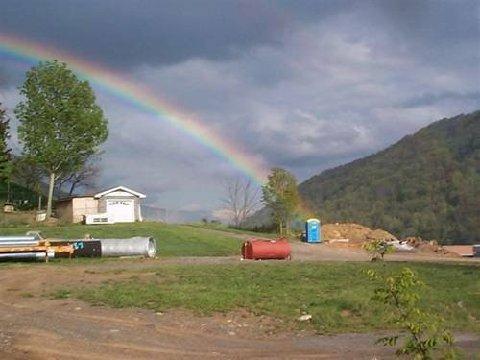Here is the real reason that Ray Lahood is not running for Congress again. He sent me this letter after I wrote him to support increases in the CAFE Standards. When he finally gets around to it in the letter below…it turns out he supports a much lower CAFE Standard than I was asking for. In fact its the “Floor” or the lowest standard that President Bush Proposed!
The politicians have been told for years by the coal, oil, gas and nuclear industries that:
1. renewables are “years” away from being able to helpay LaHood Member of Congress
2. nuclear will have to be part of the mix
3. that we must drill and mine on environmentally sensitive areas to be energy self sufficient
4. people who say other wise are out to destroy our economy
They have said it for so long that the politicans came to believe it. Now that the world is changing the energy companies can’t say “oh we were lieing to make more money”. So they are just mum and as the Environmental Storm brews all the dinosaurs are running to get out of the road.
COMMITTEE ON APPROPRIATIONS
select intelligence oversight panel ranking member
subcommittee onagriculture, rural development,
food and drug administration,
and related agencies CONGRESSMAN RAY LAHOOD
subcommittee onlegislative branch 18TH DISTRICT, ILLINOIS
November 14, 2007
Mr. Doug Nicodemus
948 E. Adams
Riverton, IL 62561
Dear Doug:
Thank you for contacting me and sharing your concerns about global warming and our nation’s energy supply. It was good to hear from you on these important issues, and I welcome the opportunity to respond.
America must take responsibility for its energy needs, decrease our dependence on foreign oil, promote clean renewable energy sources, and implement a plan to keep our economy growing and our nation safe. It is my understanding that, even though the United States is the world’s third largest crude oil producer, less than 40 percent of the crude oil used by U.S. refineries was produced in the United States. About 50 percent of our petroleum imports are from countries in the Western Hemisphere, with 20 percent from the Persian Gulf, 15 percent from Africa, and 15 percent from other regions. Given these facts, I believe that we need to continue to research and develop alternative fuel choices, reduce our consumption of oil through conservation, and work to increase our domestic petroleum supply.
Any energy policy that addresses our petroleum needs must look at increasing our domestic supply. Several areas in the country offer opportunities worth exploring to increase domestic petroleum production, including the Arctic National Wildlife Refuge (ANWR), other areas in Alaska, the Rocky Mountain region, and along the continental shelf. The technology exists where we can safely extract oil and natural gas from these areas and not adversely affect the local and regional environment. Increasing efficiencies and technological advancement allow us to capture more resources from a smaller footprint.
Two bills aimed at reforming our energy laws, H.R. 2776, the Renewable Energy and Energy Conservation Tax Act of 2007, and H.R. 3221, the New Direction for Energy Independence, National Security, and Consumer Protection Act, both recently passed the House of Representatives. However, a number of concerns have arisen with both of these pieces of legislation.
The unfortunate reality is that neither of these bills does anything to help develop our own domestic supply of oil, but rather punishes America’s oil and gas workers by raising taxes, imposing new fees, and putting the brakes on energy exploration, making us even more reliant on foreign oil. Other concerns arose from the amendment offered by Representative Tom Udall of New Mexico. His amendment, which was accepted and included within the final legislation, requires electric suppliers to provide 15 percent of their electricity using renewable energy resources by the year 2020. The intentions of this amendment are good; however, it unfortunately implements a standardized requirement for the entire country without taking into account the specific needs of individual states. While this new mandate may be easily fulfilled by certain areas of the country that have readily available access to renewable energy sources, such as wind, water, and solar, it becomes more difficult and costly to implement these requirements for other parts of the country where such amenities are not easily found. At the same time, I am also concerned that this legislation
respond to:
1424 longworth house office building fj 100 NE monroe O 3050 montvale drive D 209 west state
washington, DC 20515 peoria, IL 61602 springfield, IL 62704 jacksonville, IL 62650
(202)225-6201 (309)671-7027 (217)793-0808 PHONE/TTY (217) 245-1431
FAX (202) 225-9249 FAX (309) 671-7309 FAX (217) 793-9724 FAX (217) 243-6852
INTERNET: WWW.HOUSE.GOV/LAHOOD/
PRINTED ON RECYCLED PAPER
Mr. Doug NicodemusNovember 14, 2007
Page # 2
excludes nuclear energy from being defined as renewable. This would make it increasingly difficult for states such as Illinois to meet these new energy restrictions where nuclear is the dominant form of energy used.
This legislation also failed to address an important issue which I have consistently been concerned with, the promotion of fuel efficient vehicles. Of the 20 million barrels of oil the U.S. consumes in a day, 67 percent is used to power our cars. If Corporate Average Fuel Economy (CAFE) standards were increased by only three miles per gallon, not only would it save you money, but it would steeply reduce the amount of oil consumed each day by our country. We already have the technology to increase CAFE standards, and it is the single most important thing we could do to reduce our dependence on foreign oil.
Consistent with this goal, in the new 11 Oth Congress, I have signed onto legislation, as I have done in the past, which would increase our automobile fuel efficiency standards in the United States, H.R. 656. This legislation, introduced by my colleague from Washington, Representative David Reichert, would prescribe CAFE standards for automobiles manufactured after 2016 of at least 33 miles per gallon. This legislation has been referred to the House Energy and Commerce Committee. While I am not a member of this committee, I will closely monitor the progress of this legislation, hopeful that it will reach the House Floor for a vote so that I may continue to show my support for it.
As a result of my dedication to decrease America’s dependence on oil, while researching alternative forms of energy, I was happy to vote to support and pass H.R. 6, the CLEAN Energy Act of 2007, by a vote of 264-163, earlier this Congress. This bill will repeal a number of tax credits given to major oil corporations in the hope that this would generate investment and research in new and renewable energy alternatives. It will also amend certain deepwater oil and gas leases, issued during 1998 and 1999, to incorporate specified price thresholds applicable to royalty suspension provisions. The funds generated from this legislation would then be put into a ‘Strategic Energy Efficiency and Renewable Reserve Fund’. The money in this fund would go to researching and developing new and renewable alternatives to petroleum energy in order to wane America’s dependence on foreign oil.
Once again, thank you for taking the time to contact me. I will continue my dedication to promoting alternative and renewable fuel choices to help lessen our dependence on foreign oil as we continue to work through the 110th Congress. Please feel free to contact me again should you have any further thoughts or concerns.
Sincerely,Ray LaHood Member of Congress
RHL/mjr








